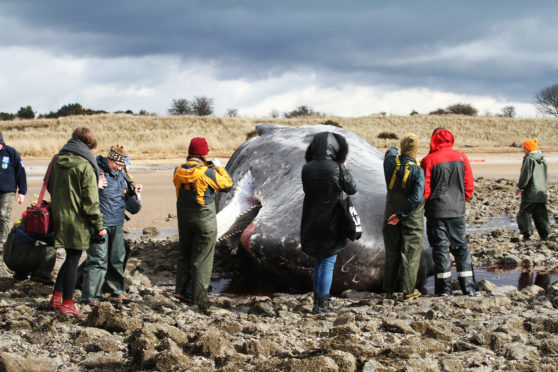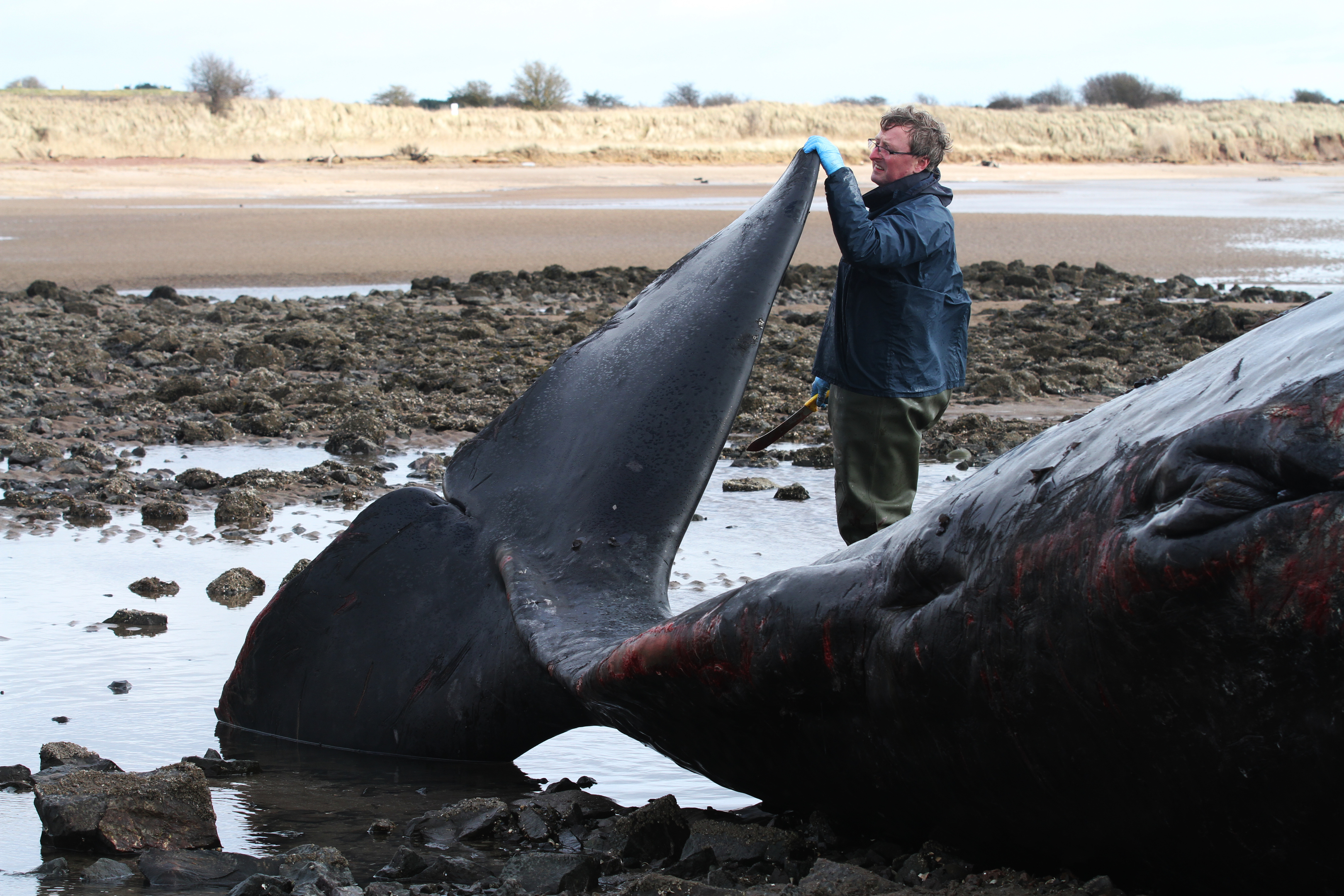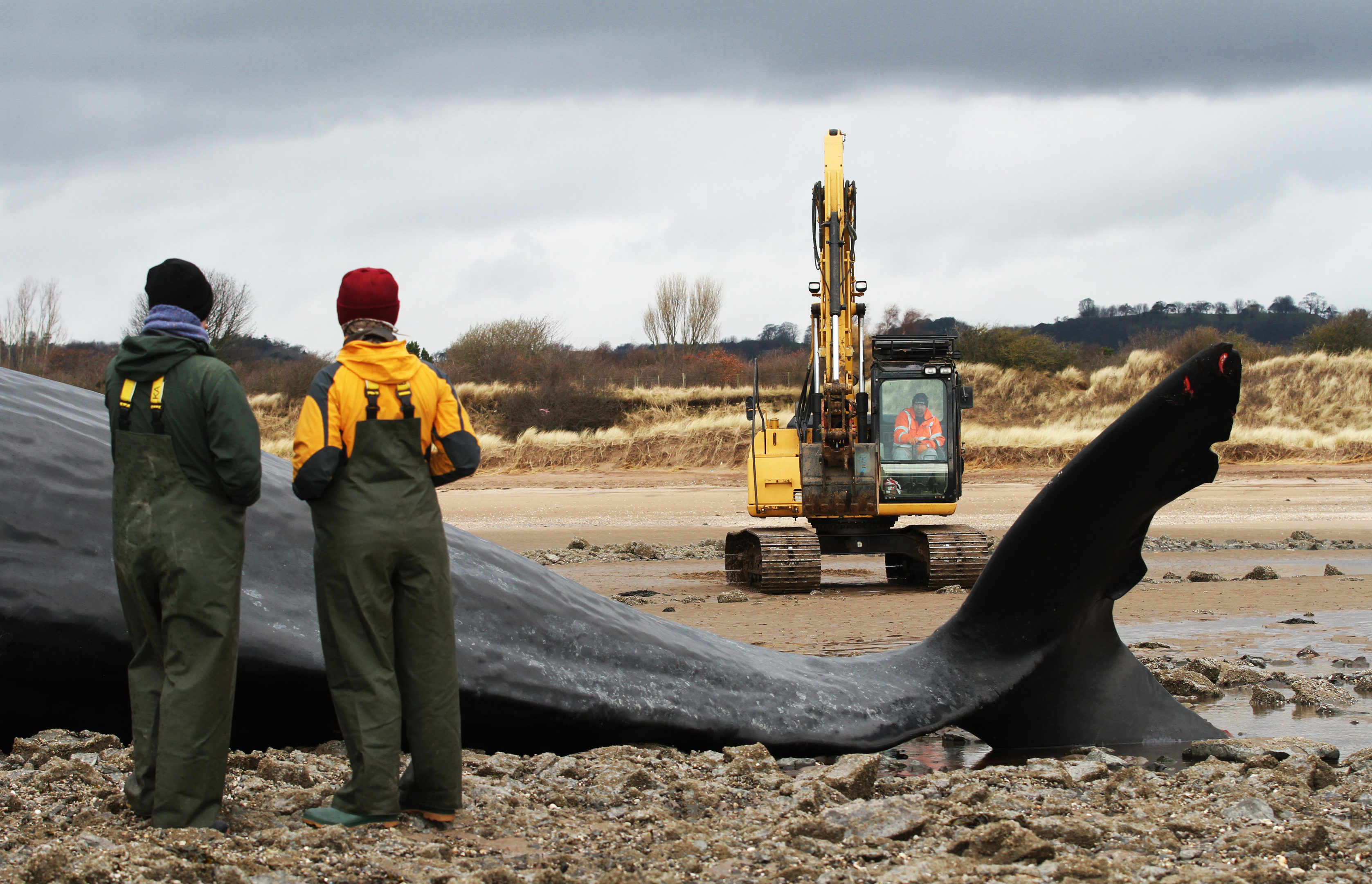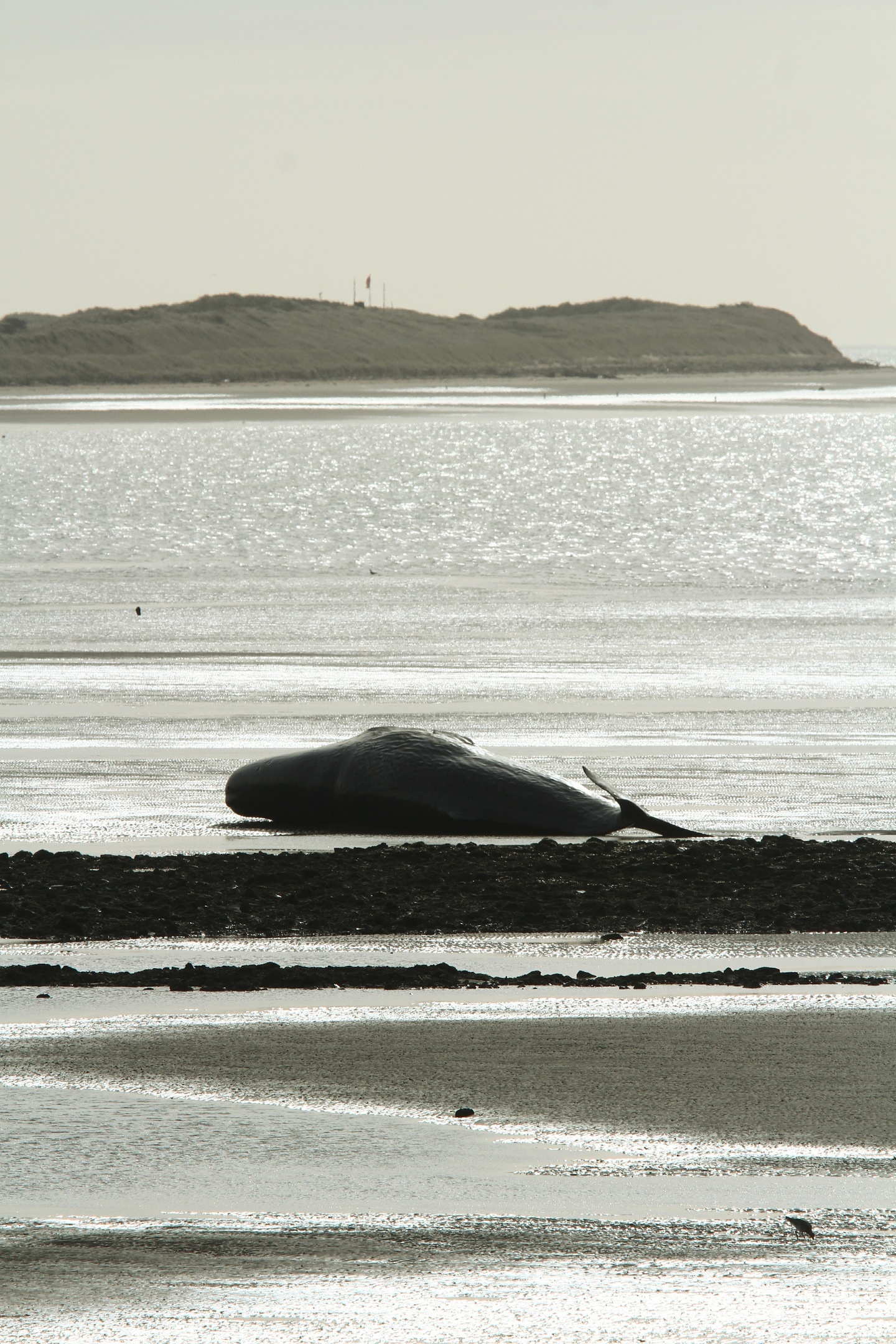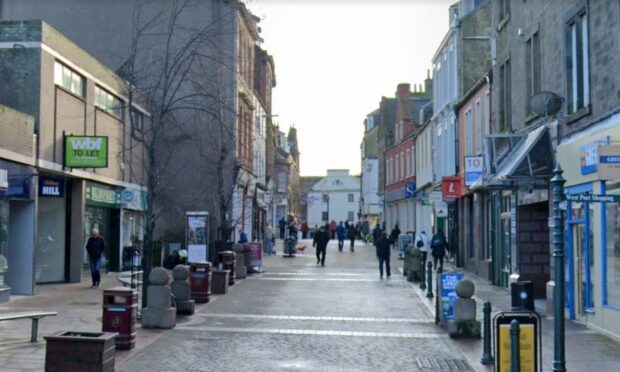The marine animal expert behind an autopsy on a 45ft sperm whale which washed up near Monifieth has given a full update on his findings so far.
Dr Andrew Brownlow, head of the Scottish Marine Animal Stranding Scheme (SMASS), carried out a post-mortem on the huge mammal after it washed up on the shores of the Barry Buddon firing range last Wednesday.
Contractors from Cupar-based FTM Plant Hire used diggers armed with swing-shovels to the beach to roll the sea creature from its location on a rocky section of the shore to the sands further inland for burial.
And in what is believed to be a world-first, the workers used their machinery to crack open the whale’s skull during the autopsy – allowing for a brain sample to be analysed which could indicate if there was any possible issues in its brain function.
The sea creature is believed to have drifted off course as it travelled from either Norway or the north of Scotland to equatorial waters for breeding season. The North Sea is a poor environment for the species, which prefers to feed on fish and squid in deep underwater trenches.
With no signs of a ship strike or marine entanglement, human interference in the whale’s death has been virtually ruled out. And Dr Brownlow said that, thus far, there are also no signs of a disease having killed the animal.
VIDEO: Watch as complex operation to probe death of and bury Tay sperm whale gets under way
No marine debris or plastic were found in its stomach, where there was 300-litres of seawater believed to have been taken in during the stranding itself.
More findings may come to light as Dr Brownlow analyses samples taken on the beach in a laboratory.
Giving an update to SMASS followers online after spending several days in Tayside dealing with the remains of the sperm whale, Dr Brownlow said: “It’s not often I wish I’d packed crampons for a post-mortem, but I really could have used them on the sperm whale necropsy this weekend.
“This sub-adult male stranded on the beach at Monifieth, measured 13.8m (45ft) long, 7m (23ft) in girth and probably weighed over 30 tonnes.
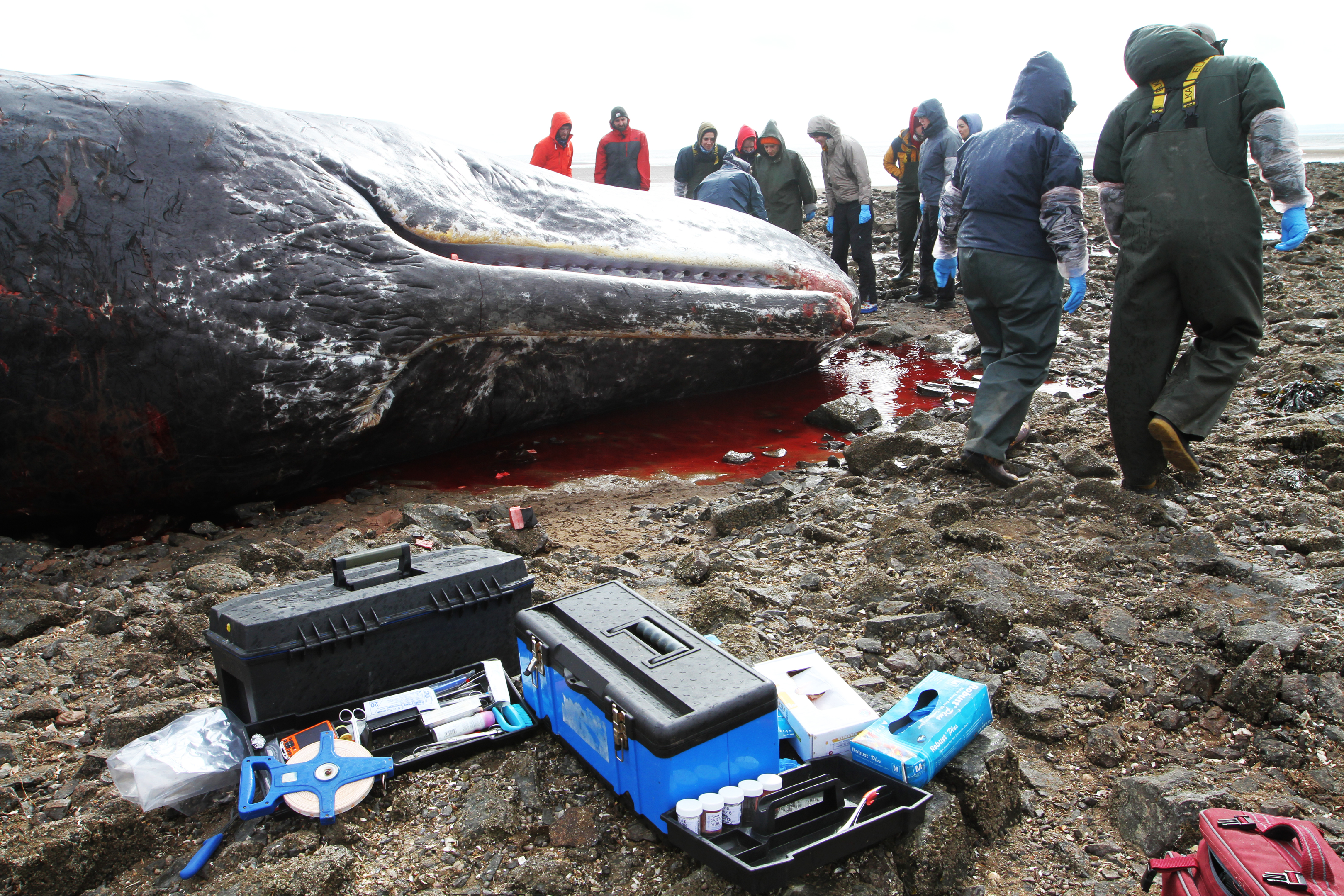
“Simply getting a blubber measurement from the flank necessitated climbing up the side of it- in this case by hauling myself up using post-mortem knives like ice picks.
“And getting these measurements was just the start of what turned into two days on the beach undertaking the post-mortem.
“Initially we had problems even moving the animal – it was simply too big for the plant machinery we initially brought, and, positioned where it was, a couple of hundred meters into the intertidal, we just ran out of time as the tide returned.
“In the end it was early Saturday morning before it could be dragged to the high water line where we could finish the post-mortem, and eventually bury, the animal.
“Undertaking a post-mortem on something this size is obviously logistically challenging, and many thanks are due to Martin Smith and his team from FTM Plant who were so competent with their machinery that they were able to use a 22-tonne JCB like a dissecting scalpel.
“As a result, in addition to a range of visceral samples, we were able to get a sample of brain tissue.
“I think this is the first time in the UK that we’ve been able to remove the head –itself something slightly larger than a transit van- during a sperm whale necropsy, and this will enable us to rule out some potentially neurological causes for the stranding.”
Dr Brownlow added: “In general, the animal was in good body condition, with no indications for entanglement or ship strike. The organs were pretty autolysed – sperm whales decompose incredibly quickly once dead – but they too didn’t show any indication of disease.
“The stomach contained about 300 litres of seawater – likely swallowed during the stranding – and some fish and squid bones which we will analyse to see what, and potentially where, it had been foraging.
“No significant marine debris or plastic was found in this case either. Obviously we will need to wait to see what else we find from our lab analysis, but it is plausible this animal stranded in the Firth of Tay due simply because it made a navigational error.
“Once in shallow waters with large tidal range, animals of this size are at great risk of stranding, and doing so is almost always fatal.
“We will keep you posted with any updates, but for now I would just like to thank all who helped with this post-mortem, especially BDMLR (British Divers Marine Life Rescue) and staff and students from the Sea Mammal Research Unit (SMRU) in St Andrews who turned out in force to help.
“I literally couldn’t have done this without your assistance, so many many thanks, and I hope you eventually manage to get the smell out of your gear!”
